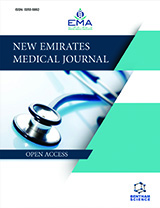Abstract
Objective: Acceptance of COVID-19 vaccination of medical personnel reduces the spread of infection the research aimed to evaluate healthcare professionals' attitudes toward vaccination by the health belief model.
Methods: A quantitative, cross-sectional research design was used for the study.
Results: Most medical personnel agreed to get the COVID-19 vaccination (84%; n=384). Medical workers over 45 (90%) showed more readiness for vaccination. The main pushbacks against the vaccination included the development of a vaccine in a short period (n=56; 73.7%), fear of side effects (n=49; 64.5%), lack of reliable information about vaccination (n=35; 46.1%), negative information spread by the media (n=26, 34.2%). Recommendations by healthcare workers (63.9%), health authorities (73.1), media (70%), large number of people being vaccinated (72.6%), and provision of trustworthy information (71.3%) facilitate vaccination.
Conclusion: The high rate of COVID-19 vaccination among medical personnel shows that they have a high risk perception of infection. Among Health Belief Model components, cues to actions were most important in willingness to carry out vaccination. Recommendations of the WHO and scientists significantly influence the willingness to carry out vaccination. The regulatory responsibilities of the state and the public's trust in it play a crucial role in raising the population's awareness about the vaccine.
New Emirates Medical Journal
Title:Healthcare Workers’ Readiness for COVID-19 Vaccination Using Health Belief Model
Volume: 5
Author(s): Tengiz Verulava*Nita Verulava
Affiliation:
- School of Business, Caucasus University, Tbilisi, Georgia
Abstract:
Objective: Acceptance of COVID-19 vaccination of medical personnel reduces the spread of infection the research aimed to evaluate healthcare professionals' attitudes toward vaccination by the health belief model.
Methods: A quantitative, cross-sectional research design was used for the study.
Results: Most medical personnel agreed to get the COVID-19 vaccination (84%; n=384). Medical workers over 45 (90%) showed more readiness for vaccination. The main pushbacks against the vaccination included the development of a vaccine in a short period (n=56; 73.7%), fear of side effects (n=49; 64.5%), lack of reliable information about vaccination (n=35; 46.1%), negative information spread by the media (n=26, 34.2%). Recommendations by healthcare workers (63.9%), health authorities (73.1), media (70%), large number of people being vaccinated (72.6%), and provision of trustworthy information (71.3%) facilitate vaccination.
Conclusion: The high rate of COVID-19 vaccination among medical personnel shows that they have a high risk perception of infection. Among Health Belief Model components, cues to actions were most important in willingness to carry out vaccination. Recommendations of the WHO and scientists significantly influence the willingness to carry out vaccination. The regulatory responsibilities of the state and the public's trust in it play a crucial role in raising the population's awareness about the vaccine.
Export Options
About this article
Cite this article as:
Verulava Tengiz*, Verulava Nita, Healthcare Workers’ Readiness for COVID-19 Vaccination Using Health Belief Model, New Emirates Medical Journal 2024; 5 : e02506882297196 . https://dx.doi.org/10.2174/0102506882297196240320093725
| DOI https://dx.doi.org/10.2174/0102506882297196240320093725 |
Print ISSN 0250-6882 |
| Publisher Name Bentham Science Publisher |
Online ISSN 0250-6882 |

- Author Guidelines
- Bentham Author Support Services (BASS)
- Graphical Abstracts
- Fabricating and Stating False Information
- Research Misconduct
- Post Publication Discussions and Corrections
- Publishing Ethics and Rectitude
- Increase Visibility of Your Article
- Archiving Policies
- Peer Review Workflow
- Order Your Article Before Print
- Promote Your Article
- Manuscript Transfer Facility
- Editorial Policies
- Allegations from Whistleblowers




























